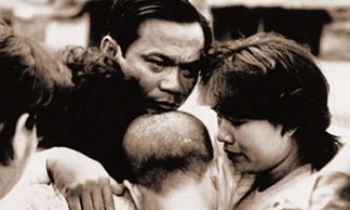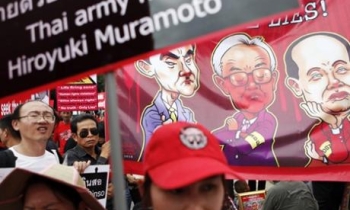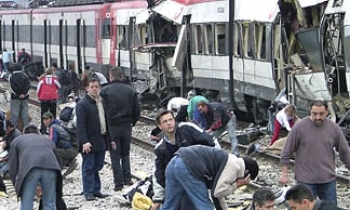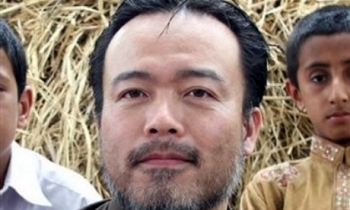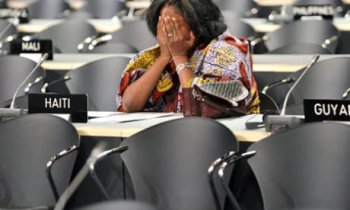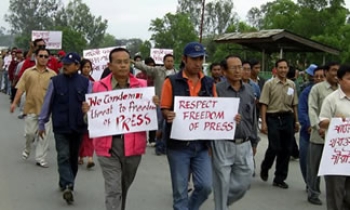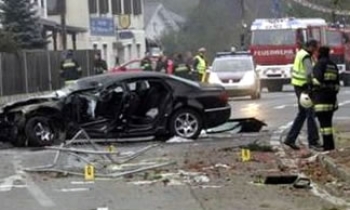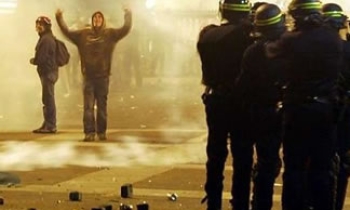The mainstream media has had a hard time lately in its coverage of the Israel-Hezbollah war, as the unofficial media—the bloggers—have been busy pointing out.
The sharp-eyed blogger Charles Johnson spotted how a Reuters photo showing burning buildings had been photoshopped. The smoke rising from a damaged building, and the building itself, were copied over the photo—making the result of Israeli bombing look far worse than it actually was.
Other bloggers noticed similar problems with photos by the same Reuters stringer. In one example, the same unfortunate woman appears in two different pictures mourning the loss of two different homes. Eventually Reuters pulled some 900 photos and fired the photographer.
Then Michelle Malkin showed how the New York Times had published a photo of a "dead" Lebanese, said to be a victim of Israeli bombing—except the man was obviously not dead. The New York Times' own photo essay showed the same young man scampering around the rubble in a very lively way.
A New York Times correction claimed the original caption was in error. According to the correction, the young man was said to be hurt and is being helped up. If you would like a good belly laugh, then take a look at Ms. Malkin's original post at http://michellemalkin.com/archives/005687.htm with either of the New York Times' captions in mind.
In fact, both the Reuters and the New York Times photographers were willfully producing what amounts to propaganda for Hezbollah.
'Sophisticated and Slick'
Hezbollah has proven quite adept at using Western media. As CNN reporter Nick Robertson explained on the TV show "Reliable Sources," Hezbollah has "very, very sophisticated and slick media operations."
In the same interview, Robertson explained how, when he reported on events in southern Lebanon, Hezbollah had "control" of what he and his crew were allowed to see and film.
Other journalists working in Lebanon have reported the same: In Hezbollah areas, journalists are only allowed to see what Hezbollah wants to show them. Hezbollah keeps copies of the journalists' passports. Journalists who show any independence are threatened.
In order to gain "access," the media inside Lebanon run the risk of offering reports so limited as to necessarily offer what Hezbollah wants the world to see. In particular, Hezbollah wants journalists to cover civilian deaths.
Qana
The incident at Qana was for this reason a Hezbollah propaganda triumph. The story of a massacre of over 60 civilians, said to be mostly women and children, conveyed by powerful images of a dead child being brought out of the ruins, brought instant condemnation of Israel from around the world.
Before Qana, most members of the Arab League had been silent about Israel's attack on Hezbollah, hoping to see Israel take down this Iranian-backed Shiite force. After Qana, Arab states loudly denounced Israel, and momentum for a U.N. sponsored ceasefire eventually became unstoppable.
What exactly happened at Qana is not clear. The initial casualty count was reduced to 54, and then to 28. Doubts have been raised about many peculiarities of this event.
Whatever happened at Qana, what is clear is how Hezbollah cynically stage-managed removing bodies from the rubble. Charles Johnson describes a scene captured by a German TV video: "They actually take the body of a child out of the ambulance, transfer it from the light stretcher used in the ambulance to the heavy duty gurney used in the rescue operation (to create the impression that it has just arrived from the bombed area), uncover it, and pose it for photographs."
Following a Script
The blog Newsbusters points out what Hezbollah does not want journalists to cover—Hezbollah fighters. Western media are not bringing back images of Hezbollah at war. Point a camera at Hezbollah soldiers firing rockets, and a journalist is likely to get a death threat.
As the blog points out, Hezbollah is fighting the victim's war. The Hezbollah have built hospitals on top of their bunkers; set up rocket launchers on top of or next to apartment buildings. They have made civilian casualties unavoidable. When the civilians they have forced to be their shields are killed, then the media are brought in to cover the loss of life.
The script the media have used to cover this war has dovetailed neatly with Hezbollah's propaganda strategy. The media's dominant coverage has focused on civilian casualties. The unspoken question to which this coverage provides the answer is: How long before Israel will stop killing civilians and accept a cease-fire?
Of course, the only possible answer to this question is the sooner the better.
But the media's script is not obvious. One could easily imagine reports meant to answer a different question: Will Israel gain the conditions necessary to its peace and security?
One might hope the mainstream media will learn something from the bloggers' recent corrections and begin asking a different set of questions.

